Elvis Lives (to Cure Autism): The WeirdWired Review of Change of Habit
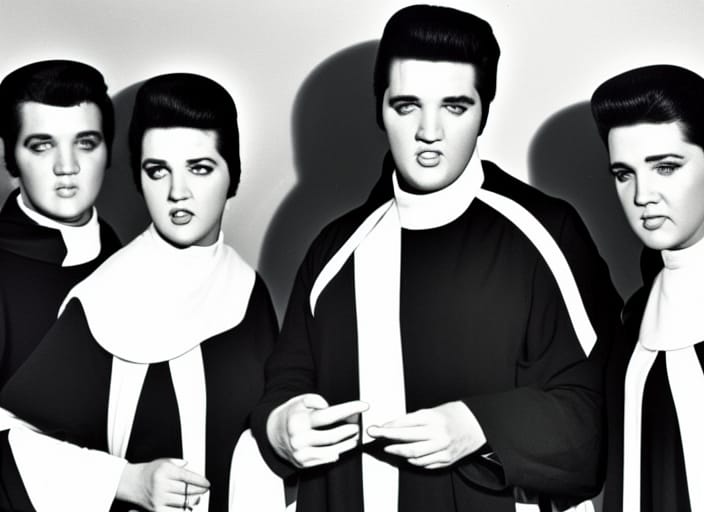
In this series, I, an Autist, review films about autism in chronological order to track how portrayals of autistic people in media evolve (or don’t!) over time and how autism tropes are laid down in real time.
[CW: ableism, sexual assault, jokes about sexual assault, racial and ethnic stereotypes and slurs, violence, police, Ed Asner, the list goes on and on.]
We begin with Change of Habit because this 1969 “American crime drama musical film” (thanks, Wikipedia) contains what may be the first cinematic depiction of an autistic character who is explicitly labelled as such. (Although Richard Sarafian’s Run Wild, Run Free was released the same year in the UK, that film never states, only strongly implies, that its subject is autistic.)
People, this film was shocking. I came for the egregious autism content -- and I got it!
But wait, as they say, there's more!
This movie is from an era when men were predators, women were prey, bigots didn’t even bother with dog-whistles, and the scariest thing white moviegoers could imagine was a neighborhood full of Puerto Ricans. Which is to say, basically nothing has changed aside from some Nice White Liberals carving out a narrow exemption for Lin-Manuel Miranda.
The film begins with a weird makeover montage that amounts to a strip tease performed by nuns. Because they are literally changing (out of) their habits!
(GET IT????)
Elvis Presley plays Dr. John Carpenter, who runs a health clinic in an unnamed, predominantly Latine neighborhood in a never-specified city. However, one can be forgiven for forgetting much of this since a.) this character does almost no actual doctoring, and b.) when he does deign to do his job, it is only up to the level of malpractice.
Also, given his limitations as an actor, I have trouble seeing Elvis Presley as anyone but Elvis Presley.[1] It doesn’t help that nothing about his performance convinces me that this guy has ever seen the inside of a medical school, I mean, aside from him being a white dude who’s kind of an asshole.
Starring opposite Elvis is Mary Tyler Moore, who also has the problem of being so famous that it’s hard to think of her as anyone but Mary Tyler Moore, despite playing a nun named…*checks notes* Michelle.
Anyway, the plot: Sister Michelle (Mary Tyler Moore) and her fellow nuns, Sister Irene (Barbara McNair) and Sister Barbara (Jane Elliott), venture into the Inner City in a fit of missionary zeal.
Their mission? To save the poors!
The catch? They’re not allowed to tell anyone they're nuns. It’s like a reverse Sister Act except it makes no damn sense. According to Convent Logic, the Sisters must win the trust of the people they’re serving by…lying to them? Sure, let's go with that.
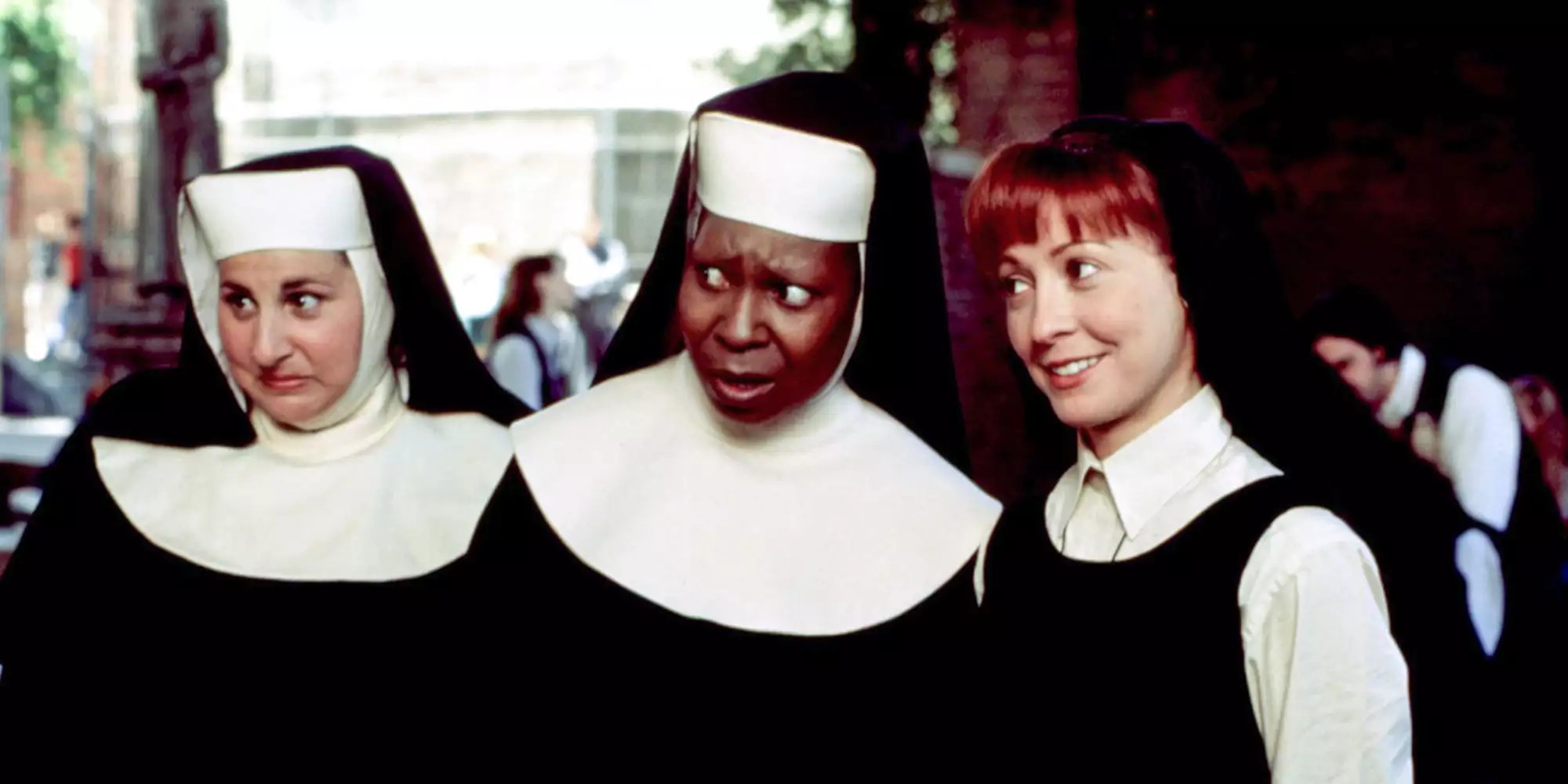
And so, with a hey-ho and a "how do you do, fellow kids?" they set out to Do God's Work.
“If we’re going to reach by these people,” proclaims MTM. “We need to be accepted first as women and then as nuns.”
Cue street harassment (so...mission accomplished?), which continues until they reach a brownstone that is a-rockin’, at which point they do come a-knockin’.
Elvis doesn’t hear them because he is busy leading some hippies in a rousing rendition of “Rubberneckin’,” a B-side that includes the lyrics “stop, look, and listen, baby, that's my philosophy.” It is unclear if the song’s inclusion is meant to be ironic -- Elvis doesn’t do at least two of these things at any point during the film’s 93-minute runtime -- but the entire production seems to lack any self-awareness, so my guess is no.
The Sisters introduce themselves -- or try to. Elvis assumes they are pregnant and seeking abortions, and in the same breath refuses to perform any because, as we will see throughout this film, the bodily autonomy of women and girls is not something Elvis cares about. After a jovial bit of slut-shaming, he instead advises them to take prenatal vitamins and “try not to gain too much weight, especially in the first three months.”
(Which is some solid gold 1970s pregnancy advice! Meanwhile, let us pause for a moment to pour one out for Roe v. Wade.)
The Sisters inform him that au contraire they are nurses who are here to help, to which Elvis replies that they “can't hack it” as healthcare providers in the ‘hood. After all, their predecessors certainly couldn’t. According to Elvis, "two of them got raped, one even against her will."

But the Sisters are not to be deterred!
Determined to see their mission through to the bitter end, the Sisters move into a grim basement apartment while their elderly white neighbors, Irish American stereotypes of the “Faith and Begorrah” variety, hurl racial epithets at Sister Irene, who is Black.
“Looks like the neighbors are Catholic” says Sister Barbara.
"Too bad they're not Christian," replies MTM. (Sick burn, Sister.)
Elvis, who has many opinions, few of them evidence-based, thinks that the Sisters should quit their jobs, get married, and raise a bunch of kids. He seems actively annoyed that three qualified nurses-slash-social-workers want to assist him at his clinic for free, despite his standing-room-only waiting room full of patients with complex medical needs.
At this point we meet some of them:
- Tomas, brother of Desiree, who has a black eye from defending his sister’s honor.
- Desiree, sister of Tomas, a young woman who feigns illness for a chance to flirt with Elvis, which is…a choice.
- Julio, a teenager with a speech disorder, an abusive father, and a tendency to threaten people with sharp objects; strangely, only the first part seems to concern anyone!
- An unnamed elderly Black woman who receives supplemental oxygen during a house call.
- Amanda, a young white girl who does not make eye contact or use oral speech.
I’m going to focus on Amanda, for reasons that will soon become clear.
Amanda is a young girl, abandoned by her mother and currently in the care of her aunt.
Elvis believes Amanda is deaf. Does he know this because he’s an audiologist? (No.) Or because he’s done a hearing screening? (Not really, unless you count striking a tuning fork next to her ear.) No, Elvis knows Amanda is deaf because when people ask her questions, she does not answer them.
Has she ever spoken? No, but Amanda’s aunt “heard her whistling once.”
Elvis says "Aha!" and explains, “People learn to whistle by imitating sound. But you gotta be able to hear to do that.” So I'm confused: does he think the aunt is lying or that Amanda is?
MTM chimes in with a differential diagnosis: "I think she's autistic."
“Artistic?” says Amanda’s aunt, incredulous. “Nah, she don’t even lift up a crayon.”
(NOW THAT’S COMEDY!)
Elvis, clearly annoyed by the fact that a woman is talking when a man could be doing so instead, protests.
Nevertheless, MTM persists, explaining, "Sometimes when a child is rejected very early in life, they crawl inside themselves and shut out the whole world, as if they're trying to punish the rest of us along with themselves."
Which…is not how autism works. Not at all. Not even a little.
COMMENCE INFODUMP!!!
MTM is referring, in a roundabout way, to the “Refrigerator Mother” theory of autism, formulated by Leo Kanner[2] in the late 1940s and popularized by Bruno Bettelheim[3] in the 1960s. This is entirely consistent with the time period, although that doesn’t make it any less painful to hear about.
The basic idea behind this…I was going to say “theory” but that suggests scientific underpinnings that simply aren’t present, so let’s instead go with “notion”…is that autism is an attachment disorder, caused by bad parenting.[4]
What’s wrong about this theory is everything. What’s sad about it is that, given what we now know about the genetics of autism, it’s highly probable that many of the so-called “refrigerator mothers” of autistic children were themselves autistic. With the right support, these autistic children and their autistic parents could have built sustainable lives for themselves and, in time, their community. Alas, "best practice" during this era was to remove autistic children from their birth families and place them in institutionalized settings to be “treated” with face-slaps, yelling, starvation, and "shock rooms."
However, the attachment dysfunction notion (also known as "psychogenesis") remained the favored explanation until well into the 1970s, when the conception of autism as a spectrum disorder began to take shape.[5]
CONCLUDE INFODUMP!!!
Where were we? MTM explains Amanda’s autistic traits to Elvis while grabbing the child’s head and attempting to force eye contact.
“You see how she resists any kind of contact? It’s typical of autistic frustration."
MTM then snatches Amanda’s doll away, which is understandably upsetting to any young child, let alone a traumatized orphan with a neurodevelopmental disability. MTM also restrains the girl, who predictably hates it.
“She never likes anyone to pick her up or hold her,” Amanda’s aunt chimes in needlessly.
(Ok, now I am starting to have autistic frustration.)
Elvis isn’t convinced. “I still think she’s deaf,” he says. (Although Elvis is wrong in this instance, it should be noted that deafness and autism are not mutually exclusive!)
Elvis then recommends that Amanda see a specialist, which…how, dude? With what money in which universal healthcare system? Ultimately, Elvis and MTM agree to disagree.
Later, while walking through the neighborhood, Elvis passes Amanda, who is sitting on the stoop, whistling. He does a double-take.
(God, I hope she's trolling these assholes. I would.)
When Elvis arrives at the clinic the next day, he approaches MTM.
"You were right about Amanda,” says Elvis. “She is autistic."
And how does he know? Did he conduct a full neuropsych eval? Did he use any developmental screeners or standardized diagnostic tools?
MCHAT? STAT? CARS? ADOS? ADI-R? ASRS? GARS-2? MIGDAS? PEP? DAYC? Anything? What about one of the bullshit ones like BISCUIT?
No, he is relying on the whistle test, considered the gold standard of autism diagnosis. /s
OH HEY IT'S ANOTHER INFODUMP
I am perhaps being a little unfair since most of these instruments didn’t exist when this film was made. In 1969, we are in DSM-II territory, where autism is officially “Schizophrenia, childhood type.” It doesn’t become an independent diagnosis until 1980, at which point specific behavioral criteria are identified.
Which begs the question, how was autism diagnosed before then? What did the process look like? More to the point, is it anything like we see in this film?
A quick dip into the scientific literature suggests...maybe? Writing for Spectrum News, Lina Zeldovich states that “[p]rior versions of the manual left many aspects of the diagnostic process open to clinicians’ observations and interpretations,” which sounds like a diplomatic way of saying that, like the Dow or traffic circles, it's all vibes.
This tracks with my (admittedly cursory) research, which suggests that autism diagnosis pre-1980 was kind of a free-for-all.[6]
Accordingly, pre-1980 autism interventions were also kind of a free-for-all! (tag yourself: I am "omnipotent and orally sadistic"!)
Elvis immediately suggests Rage Reduction as a “treatment.”
If you have never heard of Rage Reduction, oh boy, are you in for a ride. Buckle up, buttercups!

So. Rage Reduction is a form of Coercive Restraint Therapy (CRT), a type of alternative mental health…well, let’s call it an “intervention” because calling it “therapy” is far more generous a designation than any pseudoscience deserves.
While the goal of CRT is promoting attachment, the result of CRT is AT LEAST six recorded fatalities and untold amounts of trauma. As you might guess from the name, physical restraints are the foundation of CRT. However, CRT is a big tent that can also involve withholding food, forbidding access to the toilet, use of aversives, refusing to tell patients when/if their parents or guardians are ever coming back, and "rebirthing." Yes, you read that right.
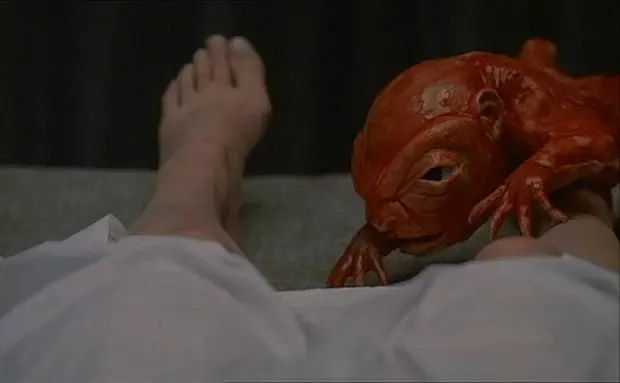
If any of this sounds familiar, it's because CRT and its offshoots appear with distressing frequency in popular culture. [7]
Variations on it also show up in real life, for example, at the infamous Judge Rotenberg Center. (#StopTheShock) [8]
INFODUMP OVER, BACK TO THE FILM.
“She’ll need love and affection,” says MTM. Which is not untrue, given that Amanda is a human child, but I have a bad feeling about the kind of love and affection MTM has in mind.
Predictably, Elvis has a hard-on for Rage Reduction.
"I'd rather try patience and love," says MTM.
Once again, they agree to disagree.
And we’ll return to this in a bit because frankly, I need to brace myself.
Other stuff is happening, including the following scenes, which are presumably meant to be humorous but mostly made me cringe.
Unsuccessful in hiring movers, Barbara dresses provocatively to get the leering men on the stoop across the street to move the Sisters’ furniture into their apartment for free. It’s funny because men are dogs! (sighhhhh)
The local loan shark is keeping an eye on things. More about him later!
Elvis and a group of his patients enter the Sisters' apartment with neither advance notice nor permission and proceed to paint the walls. As far as I can tell, these patients, all minors, do not receive any pay for their labor, unless you consider paint fumes to be currency, which one child clearly does. The jaunty “oompah” musical cue is the only signal that this is meant to be harmless fun and not a home invasion. (Ladies, your apartment is now mauve. You're welcome.)
Elvis sends the youths home and stays for dinner, which is Noodle Ring, courtesy of Sister Barbara. I Googled this dish and immediately wished I hadn’t. As everyone tucks in, the Sisters excitedly discuss the upcoming Fiesta of San Juan de Chequez, the “Caribbean Saint of Fishermen”[9] and mention that they’re sponsoring it. "I don’t get it,” Elvis sneers. “What are you, nurses or missionaries?" uh Why_not_both[dot]gif
Fortunately, one of the youths, Chino(? the subtitles, such as they are, are of no help) has forgotten his guitar (which for some reason you would bring with you when you paint an apartment???), which gives Elvis an opening to grope MTM while ostensibly teaching her a few chords. Elvis and the Sisters have a jam session. The neighbors hear music playing in the apartment and conclude, “It’s got to be an orgy!” Now, that would not have been my first guess but I like how these dirty birds think! Then Elvis washes one entire dish as a segue into MTM’s pants. She rejects him and he stalks off.
Oh right, I almost forgot! In the midst of all this gestures wildly, Elvis and MTM have a will-they-won’t-they, enemies-to-lovers thing going on.
Despite their ostensible mutual attraction, Michelle hesitates to commit, prompting Elvis to remark, "I get a feeling there's a message here. There's somebody else, isn't there?"
I must say, Elvis gets awfully bent out of shape when people violate HIS boundaries. I guess consent is a one-way street.
Speaking of which….
It’s time to Cure Amanda's Autism!
So. How do you solve a problem like Amanda? MTM, in the name of “patience and love” forces the girl to do a shape-sorting puzzle, but Amanda is not having it. She throws the blocks. Good for Amanda!
After all of 30 seconds, Elvis decides it’s time for Rage Reduction instead.
“It’s not gonna work, Michelle,” he says. “She’s hiding behind a wall of anger. It’s not gonna work. I’ll take over and we’ll try rage reduction.”
MTM snatches Amanda’s doll, while Elvis informs her, “No more toys. You need to start loving people.”
Elvis then grabs the girl and restrains her, saying that she needs to learn to "give love and take love."
(uh what now)
Elvis continues to assault a preschooler, calling her "baby" the whole time. She cries and struggles while he repeats “I love you.”

Amanda is screaming and crying because an adult man is abusing her in the backroom of his possibly unlicensed medical clinic. No one intervenes.
(OMG this is such a LONG scene. Like, it just keeps going.)
"Hold her feet," says Elvis.
(No, don't hold her feet.)
"C'mon, fight!" he screams.
(She is fighting! Against this bullshit “therapy.”)
Now Amanda is wailing. This is so, so upsetting.
Worse, while she screams and sobs, everyone tells Amanda that they love her, which is a bunch of neurotypical lies.
"Let it out!" cries Michelle.
(Yes, let the autism out! It gets trapped inside, you know. Like gas.)
"We love you baby!" they chorus, which...ick.
ET VOILA...the Demon Autism has been exorcised.[10]
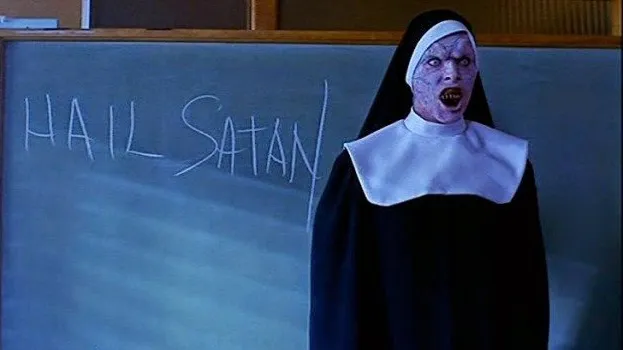
Now Amanda can repeat the words "mad" and "love you" and "big girl," which means that, as far as Elvis and Mary Tyler Moore are concerned, she is cured.
Now from where I’m sitting, which is trapped behind my autistic wall of anger, Amanda is a young child who has been abused and coerced into acting “normal”. And frankly, that’s not an unusual response to autism interventions. Amanda is rewarded for performing neurotypical behavior – see how her aunt’s entire demeanor changes as Amanda complies with Elvis’ demand for a hug – while remaining aware of what can happen should she ever let the mask slip.
And if at this point you are thinking, “Well, that was in the Olden Days, nobody does that anymore!” well then, allow me to introduce you to a little thing called Applied Behavioral Analysis.[11]
Ok, so I am making jokes but I am also feeling quite traumatized. This movie will give me nightmares, but because I am constitutionally incapable of letting things go...onward!
But before we do that, let’s switch gears and tie up some loose ends from the rest of the film:
So…remember the loan shark I mentioned earlier? Yeah, that’s still going on. He’s called The Banker, he looks like Old Truman Capote, and he rides around in a limo giving off a menacing vibe.
Sister Barbara is swiftly becoming what the fashy kids call a “Social Justice Warrior.” Good for her! I just wish her efforts weren’t so white-savior-y. The nadir comes during a trip to the Ajax Market, a local grocery store, when she converses with a middle-aged woman who informs her, "In Puerto Rico we have big fiesta parade in the streets!" Barbara then helps the woman count change, which is quite the mitzvah, because last time I checked the currency of Puerto Rico was…the US dollar.
Sister Irene, whose role in the film so far has mostly been to put up with a bunch of white lady nonsense, meets the local Black Panthers, who deem her insufficiently down for the cause. Poor Irene cannot catch a break from anybody of any race and I feel for her.
Elvis and MTM’s relationship progresses as we discover that she is Not Like the Other Girls because she learned to play football from her three dozen Irish brothers. I am amazed by the lack of chemistry between these so-called romantic leads but perhaps I shouldn’t be. [12]
I’d skip this entire subplot except that, for some reason, Amanda is there.
But why is she there? Why is she not at home, where she lives, with her aunt, who is her guardian? I mean, I like our pediatrician, but I wouldn’t just hand over my kids to him for the weekend, even if he wanted them, which I’m sure he doesn’t.
It seems that Elvis now owns Amanda? I wasn’t previously aware of this, but apparently if you “cure” an Autist, you get to keep them forever.
Although I, like the rest of my kind, lack Theory of Mind[13], I'm going to hazard a guess that NTs find this sort of thing heartwarming. However, all I can see is that, like a well-trained puppy, Amanda must perform tricks to get treats. And that makes me...sad? (Bear with me, folks, for I also have no emotions.)
“Ice cream! Ice cream! Ice cream!” Amanda cries, upon spotting an ice cream truck.
"Good girl!" respond her keepers, and reward her with an ice cream cone.
Strawberry, to be precise, which surprises me a little? Most strawberry ice cream has weird fruit chunks in it AND doesn't taste the way it smells, both of which can be dealbreakers for autistic people. Also, what if she's lactose intolerant? Many of us have food allergies or sensitivities. But now that I think about it, Elvis and MTM choose for her so I guess it makes sense that they would make the worst choice.
THEN they put her on a carousel and sing at her and won't let her leave until she smiles. A bold move! If I tried this with my kids I'd be rewarded with a blast of pink vomit down the front of my shirt (and, to be honest, I'm kind of hoping that's what happens next).
Elvis sings, “Have a Happy,” a ditty about a magic key, ice cream, and carousels. Which, indeed, accurately describes what's happening onscreen. Unless...could there be a deeper meaning? As an Autist, I lack the capacity to comprehend metaphors so there may well be subtext I'm not picking up on.
Throughout, MTM strokes Amanda’s hair and Amanda grimaces through the pain, in the hopes that it will stop soon.
If it sounds awful, that's because it is. On the other hand, this is still basically what we do to autistic kids: expose them to unpleasant stimuli until they shut down or learn to feign normalcy.
Throughout, they continue to talk about Amanda as if she’s not right fucking there. This too is something that continues into the 21st century!
More plot points/observations:
Elvis is willing to spend a lot of time on “fixing” Amanda, who seems reasonably content and well-adjusted, but thinks they shouldn’t bother with Julio, who clearly displays signs of having serious mental health issues and regularly threatens to harm himself and others.
Father Gibbons, the parish priest, wants them out and he wants them out yesterday. It’s bad enough that the Sisters are unladylike, but they are also trying to reform the Catholic Church with the kind of incrementalism that gets results! There will be NO mass in Spanish on Father Gibbons' watch! No folk music either, just in case anyone gets any ideas!

Some light shade from MTM later (“I’m sure we can always count on you to tell it like it was,” she quips) and the Church decides that the Sisters will be sent back to the Convent, their project will be shut down, and the Fiesta cancelled.
Before she leaves, MTM dons her habit and reveals her true identity to Elvis, who's mad that she didn't tell him she was a nun. Apparently she should have to him because she knew he was “getting hung up on [her].”
"Didn't you take a vow of honesty?" he snaps.
(No, actually! Bro do you even Catholic? (It's ok, judging by my dad's side of the family, neither do they most of the time.))
BONUS MICROAGGRESSION TIME!
So Barbara decides to do a civil disobedience at the local bodega. Where we, the audience, are "treated" to a surprise appearance by Ed Asner. Now, I'm sure there's a more over-the-top way to say "Fuck You!" to the entire autistic community than having Ed Asner play a cop, but at the moment, I am hard-pressed to think of what that might be.
.
.
.
No, wait, I thought of it!

Officer Ed shows up at the Ajax market, where Barbara is protesting price-gouging, and delivers a short speech on modern policing: “In a potentially violent confrontation, it’s imperative that law enforcement officials should conduct themselves with calm and understanding.”
…did cops make this film???
(Everyone doing ok? Then let's wrap this up.)
The day of the festival dawns. Everyone is dancing and drinking loudly.
Except for Amanda, who has taken up ventriloquism with a puppet named Irene that parrots all the racist things Amanda hears in the course of her every day life. It's a scene that absolutely does not work as comedy but could serve as an object lesson in how echolalia gets autistic kids in trouble. (ASK ME HOW I KNOW).
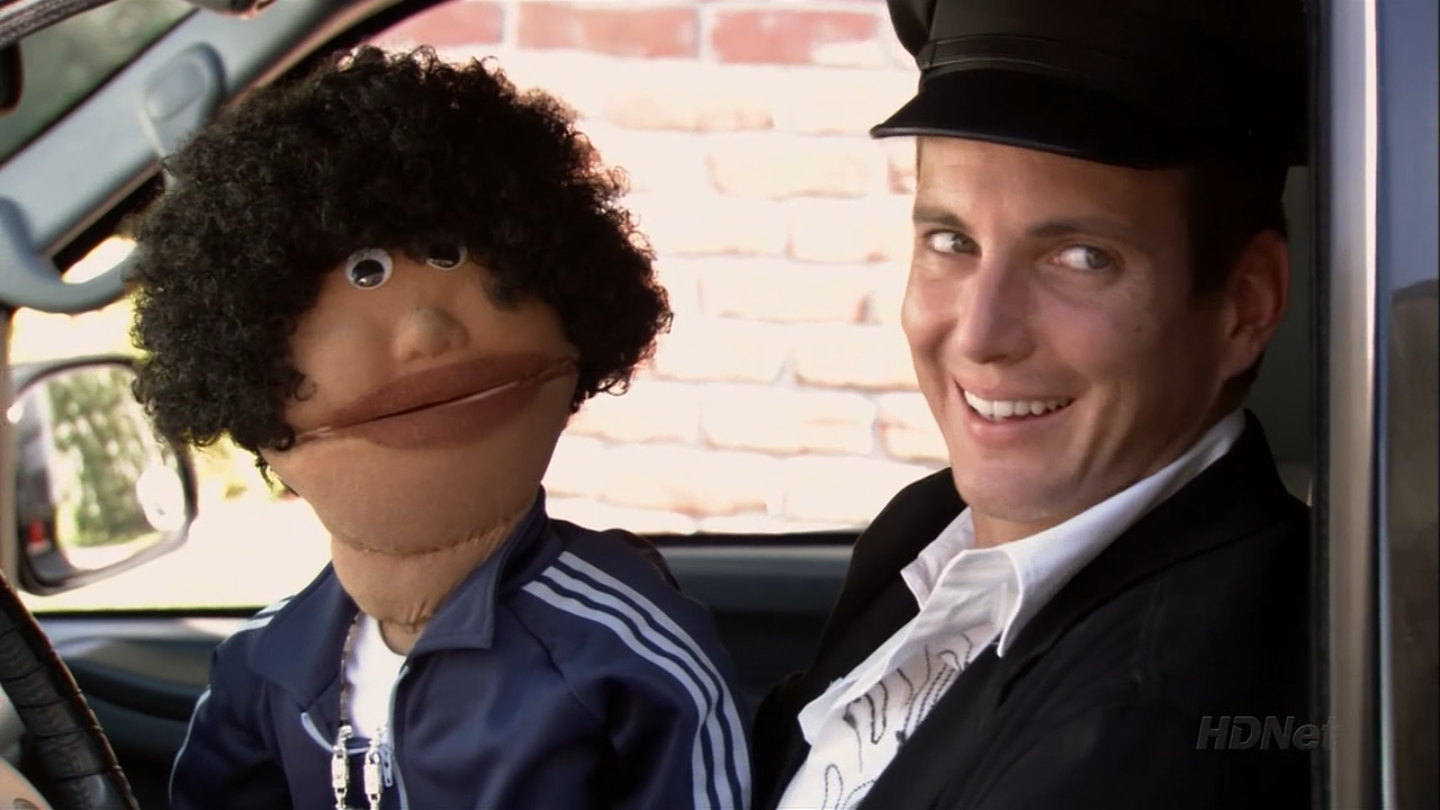
There’s also a ton of last-minute drama. Sister Irene confronts the Banker and declares debt forgiveness for the entire neighborhood. Elvis and the nuns get in a fistfight with a loan shark. And then the Black Panthers show up.
(Now it's officially a party!)
The police intervene, but surprisingly peacefully.
Again, I ask: did cops make this film???
We don't see Amanda again. Now that her plot-moppet services are no longer required, she vanishes into thin air or something. Meanwhile, Irene returns to the Convent as planned, Barbara leaves the order to pursue social justice, and MTM wavers.
This would be a fine stopping point! A poignant parting of the ways as each Sister embarks on her new life path.
However, this film demonstrably does not know when enough is enough. Thus, in a weird and frightening coda, MTM returns to the now empty apartment, gets undressed, and prepares to go to bed.
But.
TWIST!
Peeping Tom Julio is watching. He breaks in and sexually assaults MTM, who screams. This alerts Elvis, who charges in to save the day.
A ludicrous knife fight ensues. Elvis wins, Julio flees.
High on adrenaline from recent traumatic events, MTM and Elvis embrace. They confess their love and Elvis floats the idea of a proposal, “Let’s try to find a way.”
But there’s a problem: Michelle must choose between Elvis and God. One is a temperamental authority figure who doesn’t understand consent, the other is a singer-turned-actor.
After this needless non-resolution, the film ends with MTM attending mass, which is hip now because Elvis is providing the music. As a non-religious autistic, one of many, I have nothing to add here.
In the end, I'm not sure what to make of Change of Habit. Is it a good movie? Most definitely not! Does it have any redeeming value whatsoever? Hmm...not really. Do I regret watching it? Here's where I reject the sunk-cost fallacy and say, "Yeah, kinda." In the time it took me to watch (and rewatch) this film, I could have seen like three-quarters of The Traitors or even just half-paid attention to a couple of Masked Singers while fooling around on my phone.
So if you need a tidy verdict, here it is: while the bar is admittedly very, very low, Change of Habit nevertheless failed to clear it.
- Lest you think I’m being petty, I will note that The New York Times agrees with me, calling Presley’s performance “somewhat subdued, callow, slightly unconvincing, and largely mystified” at [https://www.nytimes.com/1970/01/22/archives/screen-change-of-habithouse-of-cards-also-shares-double-bill.html].
- Leo Kanner, the first child psychiatrist in the US, despite having trained in neither pediatrics nor psychiatry. (Then, as now, the primary qualification for being an Autism Expert is to be allistic.) His 1943 case study, “Autistic Disturbances of Affective Contact,” published in a journal titled (I kid you not) The Nervous Child, is one of the most-cited papers on autism and the first to describe it as a unique disorder as opposed to a symptom of another disorder (namely, schizophrenia).
-
Bruno Bettelheim, a self-styled “psychologist” best known for lying about his academic credentials, plagiarizing the work of other scholars, and physically abusing disabled children at the University of Chicago’s Sonia Shankman Orthogenic School.
I’m mostly NOT going to talk about Bruno, except to note that in his 1967 book The Empty Fortress: Infantile Autism and the Birth of the Self, he writes:
“The difference between the plight of prisoners in a concentration camp and the conditions which lead to autism and schizophrenia in children is, of course, that the child has never had a previous chance to develop much of a personality.” Which whoa dude let’s not get carried away.
Not only is this an objectively bad take, it's slightly jaw-dropping given the number of disabled children killed by the Nazis and their collaborators, as well as the fact that Bettelheim himself spent time in both Dachau and Buchenwald.
I mean, Bettelheim wasn’t autistic, so he’s only guessing what it’s but like, but I would bet any amount of money that if you asked most autistic people what is it actually like to be autistic, NONE of them would compare it to ACTUAL GENOCIDE.
- In the literature, both Kanner and Bettelheim cite mothers (whom they deemed) insufficiently affectionate towards their children, as well as weak or absent fathers: “...there are really very few warmhearted fathers and mothers. For the most part, parents, grandparents, and collaterals are persons strongly preoccupied with abstractions of a scientific, literary, or artistic nature, and limited genuine interest in people” (Kanner).
- There’s much, much more history here, of course, and if you’d like to drink from the firehose of bad science do a deep dive into this fascinating subject, you can find a wealth of eye-opening, jaw-dropping primary sources at The Autism History Project [https://blogs.uoregon.edu/autismhistoryproject/]
-
There’s much, much more history here, of course, and if you’d like to
drink from the firehose of bad sciencedo a deep dive into this fascinating subject, you can find a wealth of eye-opening, jaw-dropping primary sources at The Autism History Project: [https://blogs.uoregon.edu/autismhistoryproject/] - If you need an example, I’ll refer you what I consider to be the least upsetting one, which is the "Mother Daughter Laser Razor" episode (S3e10) of Bob's Burgers, an animated sitcom about a working-class American family whose members present as neurodivergent though they are not canonically identified as such: [https://bobs-burgers.fandom.com/wiki/Mother_Daughter_Laser_Razor]
- Since we are starting to stray far from the film itself, I’m going to let the popular podcast Behind the Bastards explain why you should be furious: [part one: https://www.iheart.com/podcast/105-behind-the-bastards-29236323/episode/part-one-the-judge-rotenberg-center-91442618/ and part two: https://www.iheart.com/podcast/105-behind-the-bastards-29236323/episode/part-two-the-judge-rotenberg-center-91550264/]
- Not a thing.
- I probably shouldn’t joke about this because exorcisms do happen, and to people who don’t deserve it. But! Spare a tear and the world’s tiniest violin for exorcists in the time of late capitalism, who complain of burnout due to a lack of institutional support as well as the general absence of “aid from psychologists to help them sift between the genuinely ‘possessed’ and the mentally ill” And, well, I’m not a psychologist but I think I can help with that. The difference is that the first thing you said isn’t real. [https://www.newsweek.com/catholica-exorcists-say-they-are-overloaded-possessed-people-1712382]
- Many autistic people far more knowledgeable than myself have written about ABA, and I encourage you to listen as they tell you all about our brand of conversion therapy, which is not only legal but insurance-mandated in all 50 states!
- Come for the autism tropes, stay for the hot celebrity goss: Did you know...that EGOT and all-around legend Rita Moreno once revenge-dated Elvis to get back at Marlon Brando? Oh yes she did, because that’s what boss bitches do. Her verdict? Presley was “sweet but boring.” [https://people.com/movies/rita-moreno-says-she-dated-elvis-as-revenge-against-cheating-ex-marlon-brando-it-was-wonderful/]
- I'm not going to link to this sorry excuse for "research" (1985), one of many, many studies that discuss autistic people the way medieval theologians used to debate women, livestock, and non-Christians ("But what ARE they? Do they feel pain? Have they SOULS????") Just know it exists.